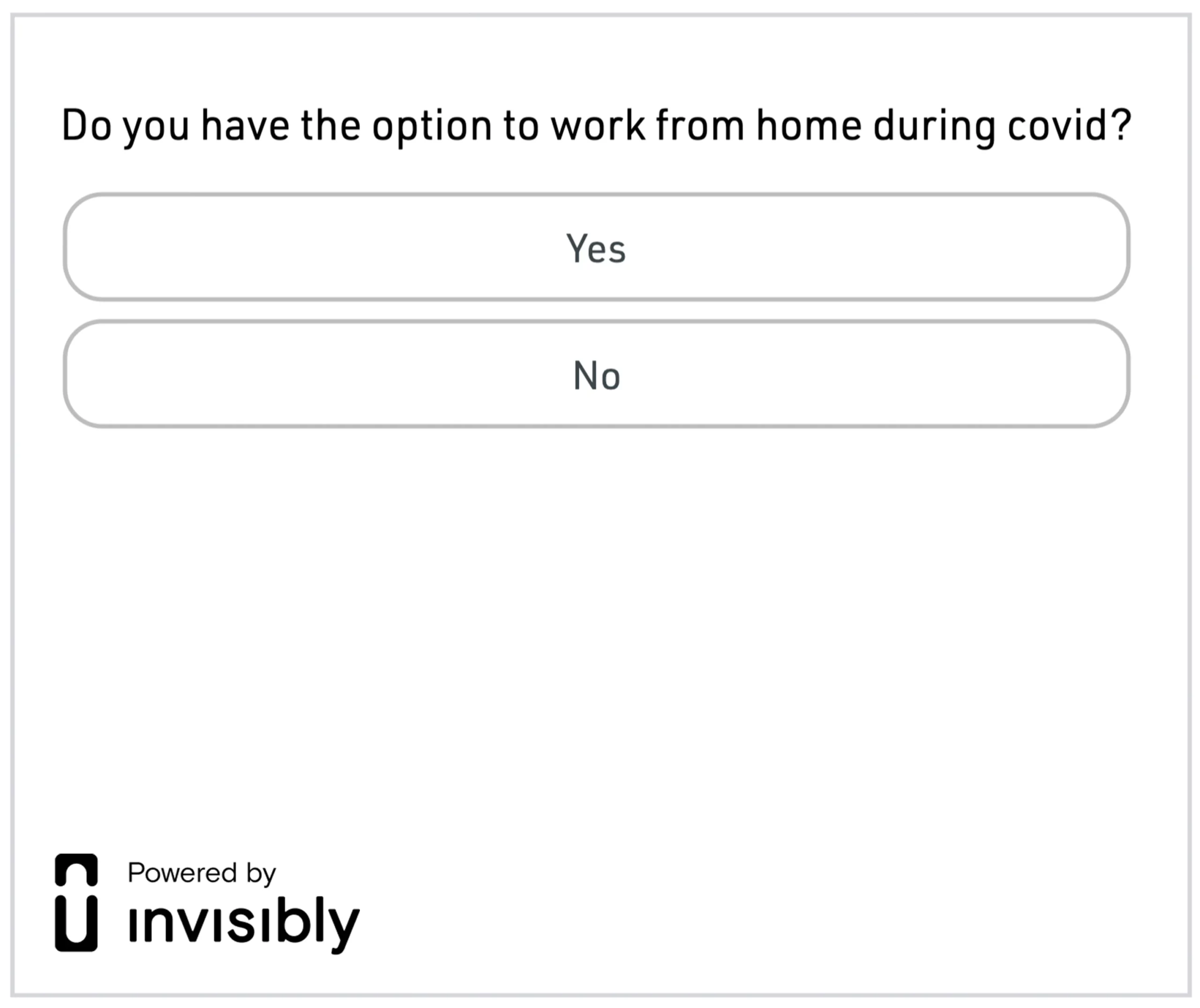Did Delivery Deliver During COVID?

Takeout and delivery services have become a mainstay of our lives during the COVID-19 pandemic but according to our research, it’s not nearly as ubiquitous as it seems. Invisibly used our Realtime Research tool to survey 1253 Americans to determine some of their basic takeout and delivery habits.
Highlights
- We asked nearly 1300 people about their takeout and delivery habits during the pandemic.
- The results followed two distinct tracks: household income, and whether they had the option to work from home.
- Most people didn’t order takeout or delivery during the last few months, but those who did were more likely to have work from home options and/or higher incomes.
- Young people are more likely to order takeout/delivery than those in other age cohorts.
Results
A surprising number of respondents stated that over the last 12 months they hadn’t ordered takeout or delivery. Some 56% abstained from the service which has played a major role for many during the pandemic. Interestingly, the number of people who haven’t used takeout services over the last year closely mirrors the number of people who say that they do not have the option to work from home (57%).


There appears to be a correlation between household income and takeout/delivery use as well with 62% of those making between $60,000 and $100,000 per year being 8% more likely than the next most likely income bracket to utilize takeout services. Some 54% of people making $30,000 or less say the same as do 45% of $30,000 to $60,000 and 50% of $100,00+.

When it comes to age groups, 18-24 year-olds are most likely to have used takeout or delivery services during the pandemic (59%). Some 45% of both 25-34 year-olds and 35-44 year-olds say the same. Interestingly, when asked, some 46% of those who could work from home and did order takeout said they did it 1-2 times per week. Some 13% ordered it three or more times per week. Similarly, of those who could not work from home but did order takeout, some 38% did so 1-2 times per week and 12% three or more times a week.


The Process
From February 3 to 4, 2021, Invisibly questioned 1253 Americans about their takeout and delivery habits. Invisibly used the Realtime Research tracker to ask whether they’d used a service like that during the last 12 months (essentially throughout most of the pandemic), and how often they get takeout. We also asked about their work from home status and some basic income questions in order to determine trends based on those outside factors.
We Asked
- Do you have the option to work from home during covid?
- Did you order home delivery (grocery or takeout food) during the last 12 months?
- How often do you get home delivery (grocery or takeout food)?

Discussion
Despite conventional wisdom, it appears that use of takeout and delivery services weren’t as ubiquitous as previously believed. In fact, it is clearly linked in ways to the kind of work people do and their income levels. For instance, those who have the option to work from home which are predominantly office workers, are also the most likely to have ordered takeout during the pandemic. Similarly, those in some higher income brackets were also more likely, suggesting that they had the disposable income to do so. Putting the two together paints an interesting correlative picture of who exactly is utilizing these services.
One thing that was surprising was just how many people actually didn’t have the option to work from home at their jobs. There may be a misconception about just how common it is for people to be working from home right now despite the record number of people currently doing so. When they did order takeout or delivery, they did so more than just occasionally indicating again that they had the need (work from home) and the means (higher income) to indulge in food delivery in ways that those who only had the one consideration may not have had.
Invisibly Realtime Research surveys differ from traditional online surveys in that the questions are shown to the user on web pages in place of an ad (Figure 1). Unlike Google Surveys, which block access to content until the questions are answered, Realtime Research surveys are optional, thus ensuring that participants are responding voluntarily.

Invisibly
Use your data to access premium content you love.
